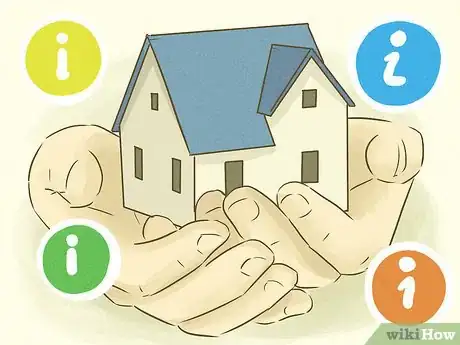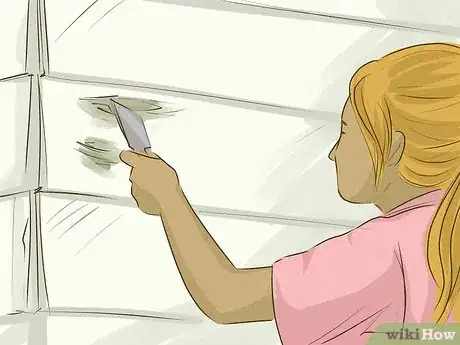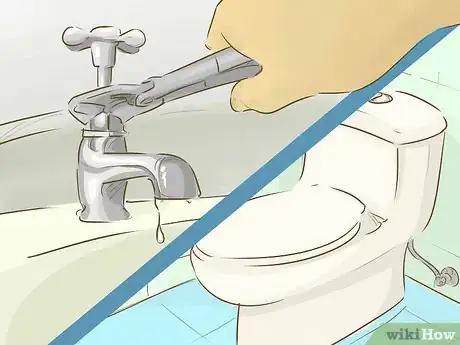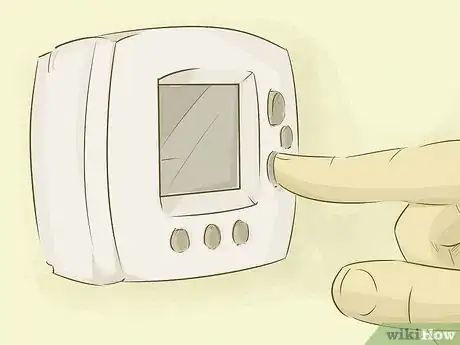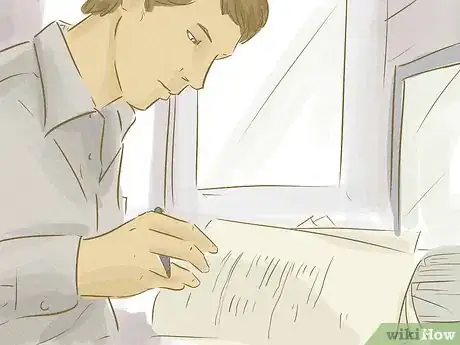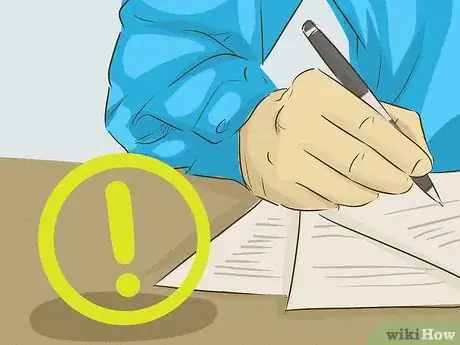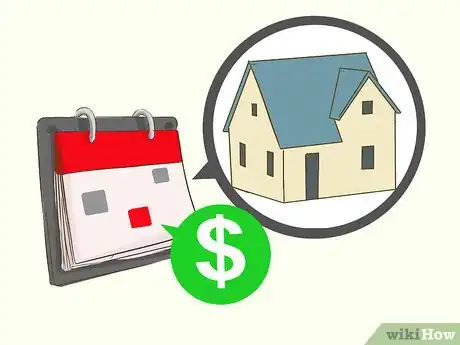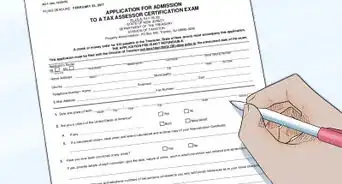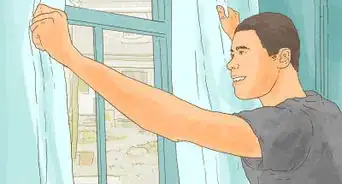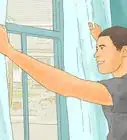This article was co-authored by Lahaina Araneta, JD. Lahaina Araneta, Esq. is an Immigration Attorney for Orange County, California with over 6 years of experience. She received her JD from Loyola Law School in 2012. In law school, she participated in the immigrant justice practicum and served as a volunteer with several nonprofit agencies.
There are 9 references cited in this article, which can be found at the bottom of the page.
This article has been viewed 63,436 times.
Every home for rent must be safe to live in (“habitable”). A home isn’t habitable when it has serious problems that make staying in the home dangerous to an ordinary person. To check whether your home is livable, walk around and identify serious hazards and other problems, such as inadequate plumbing, rodent infestations, or holes in the roof or walls. If your home isn’t livable, you have some options.
Steps
Documenting the Unlivable Conditions
-
1Read your jurisdiction’s housing laws. Under common law, every lease comes with an implied warranty of habitability. This means that your home must meet minimum living standards based on the housing code and other laws.[1]
- Check your state or territorial law. States will set out general requirements, such as requiring landlords to make repairs and to keep the home habitable. You can find your state laws in a local law library or online.
- Read your county and city laws. County and city laws are usually much more detailed than the state law. You can find this law online or by contacting your local housing, health, or building department.[2]
- You do not necessarily have to have a formal lease for this to apply. Legally, even if you don't have a paper lease, your landlord still can't run a slum. A formal lease does serve as a contractual basis for terms and expectations, though.
-
2Realize that violations must be serious. Not every violation of your local housing code will render your home unlivable. Generally, violations must be serious. For example, some housing codes require that certain kinds of screws be used. A single, minor violation like this will not render your home unlivable.
- Your home also doesn’t need to be aesthetically pleasing. A home isn’t unlivable because you don’t like the wall color, the layout, or its size.
Advertisement -
3Look for obvious hazards. Your home might be unlivable because there are hazards that make the home unsafe. Go around and find any of the following:
- Holes in the floor, walls, or ceiling. Holes can let in vermin and also allow heat to escape. You might also break an ankle if there’s a hole in the floor that isn’t repaired.
- Exposed wires or faulty electrical system. A faulty system could cause a fire in your home. Make sure the electricity system works as expected.
- Rickety staircases. If the steps or railings are loose, then they are obvious hazards.
- Asbestos or lead paint. These should be rare in modern homes. However, if your home is quite old, then they might be present. You might need to hiring an inspector to find out if either is present.
- Broken security fixtures such as locks, doors, windows, etc.
-
4Find vermin or other pest infestations. Rundown buildings often have mice, rats, cockroaches, spiders, and other pests. Vermin can live in the walls and come out at night.
- Also look around the outside of your building. If it’s full of garbage, then you shouldn’t be surprised if there are vermin around. An infestation could render your home unlivable.
-
5Check your plumbing. Inadequate sanitation is a reason your home might be unlivable. Make sure all toilets flush and that water can go down every sink.
- Your bathtub or shower must also work. If it doesn’t, then your home could be unlivable.
- You must have enough hot and cold running water to bathe and satisfy other needs.
-
6Make sure you have enough heat. Local housing codes should be quite detailed about how much heat your landlord must provide and when. For example, in Chicago, a landlord must provide sufficient heat between September 15 and June 1 so that an apartment can be at least 68 degrees during the day and 66 degrees overnight.
-
7Find signs of mold. Not every jurisdiction agrees that mold makes a home unlivable. However, if your jurisdiction does, then you should carefully document it. Mold can come in a variety of shapes and colors. It can be black, green, white, or gray. It may also be spongy or shiny.[3]
- Search water-soaked areas of the home. For example, mold might grow in ceiling tiles or wall paneling if you have a leaky roof. It can also grow on newspaper and cardboard boxes in a wet basement.
- Also document how the mold affects your health. Mold can cause fatigue, rashes, asthma, and nausea. Keep copies of your medical records.
- Keep track of the type of mold, as well. There are laws outside of the housing code that protect individuals who may have been harmed by black mold.
-
8Photograph the uninhabitable conditions. You want documentary proof of any problems that make your home unlivable. Walk around and take photographs or video of all problems.[4] If your camera has a date stamp, make sure the date is accurate.
-
9Keep detailed records. Some conditions can’t be photographed. For example, your home might not have any hot water for five days straight. However, you can write down the dates in which you didn’t have hot water.
- Also ask a friend to write an affidavit for the condition. For example, invite someone over and turn on your water. They can write out an affidavit, which will hold greater impact in housing court than a written witness statement.[5]
- A witness is great in case you need to go to court.
Working with Your Landlord
-
1Meet your own obligations as a tenant. You have a duty not to make a problem in your home worse. For these reasons, you should always keep your home as clean and sanitary as possible. Pick up after yourself and use trash cans with lids. Dispose of trash promptly.
- Remember that you or a guest can’t have caused the hazard. For example, you can’t have ripped out a stove, which caused a hole in your wall. If this happens, you’re responsible for repairing the problem.[6]
-
2Provide written notice to your landlord. You can’t just up and leave your home if you think it is uninhabitable. Instead, you must give your landlord notice of the conditions so that they have a chance to fix the problems.
- You should use a business format so that the letter looks professional.
- Identify the problem and state how long it has existed. Be as detailed as possible.
- Make a specific request that the landlord fix the problem and give a deadline.
- Maintain a professional tone. You might be angry, but try not to let it show.
- You can hand deliver the letter, but it’s probably better to send it certified mail, return receipt requested. Hold onto the receipt.[7]
-
3Give a reasonable deadline. The law requires that your landlord be given a reasonable chance to make repairs before you break your lease. What’s reasonable will depend on the seriousness of the violation. Consider the following:
- If you lack heat or hot water, the landlord should respond within 24 hours.[8]
- However, if you have a mice infestation, your landlord should have time to hire an exterminator, which means you might need to wait several days for the exterminator to show up.
-
4Document the conditions if they remain unfixed. Your landlord might blow you off, in which case you must document that they haven’t made the repairs. Take new pictures or video, and ask a friend to witness anything that can’t be documented visually.
- Sometimes, your landlord will try to fix a problem but fail. For example, they might hire an exterminator to get rid of a mice problem, only for the mice to return.[9] You aren’t required to stay in the home if their fix fails.
- In some cases, your landlord may even be responsible for alternative accommodations if the home is deemed uninhabitable.
-
5Call your safety inspector. Every city or county should have inspectors to look into different types of damage. Find a phone number for the correct inspector online or in the phone book. Ask an inspector to come out and look at your home.[10] Try to be home when they show up so that you can point out all of the problems.
- Get a copy of the inspection report. This will come in handy if you end up in court.
- If the inspector finds problems, they should send the report to your landlord and possibly fine them. This is a good way to prod your landlord to make necessary repairs.
Taking Further Action
-
1Consult with an attorney. When your unlivable home hasn’t been fixed, you should consider what to do next. Every jurisdiction has its own laws, so you should probably meet with a landlord-tenant attorney to discuss your options. You want to make sure to follow the law to a “T.”
- Obtain a referral to an attorney by contacting your nearest bar association.
- If money is tight, you can check whether any local legal aid organizations provide help to tenants. Find their phone number online.
-
2Check if you can withhold rent. In some jurisdictions, you can refuse to pay rent if your landlord doesn’t fix the uninhabitable conditions. However, not every jurisdiction allows this, so you should carefully research the relevant law.[11]
- You might need to pay your rent into the court, which will keep it until you resolve the dispute with your landlord.
- Make sure you are current on your rent if you choose to take this route.
-
3Decide whether to repair and deduct. In some jurisdictions, you can pay to fix problems yourself and then deduct the cost of repairs from your rent. For example, if you hired your own plumber to fix the pipes, then you can deduct the $800 from your next month’s rent.[12]
- You shouldn’t pursue this course if the repairs cost too much. For example, you shouldn’t pay $15,000 to have the roof fixed.
-
4Move out. You might decide to leave because the conditions are so intolerable. Read your jurisdiction’s law to see what kind of written notice you must give your landlord. You can move permanently or temporarily. If you move temporarily, you may be able to have your landlord pay for your temporary lodgings.[13]
- By moving out, you run the risk that your landlord will sue you. However, you should consult with an attorney to check whether this is likely.
- If you move out, remember to put the home back in its original condition (apart from the defect that has caused you to leave). Remember to photograph the empty house as proof.[14]
-
5Sue your landlord. Whether you move out or not, you might be able to sue your landlord for violating the implied warranty of habitability. In your lawsuit, you will argue that the house wasn’t worth what you paid for it in rent, and you ask the judge to reimburse you for the difference. Typically, you can file your lawsuit in your local small claims court depending on how much you are owed.[15]
- Check your local jurisdiction regarding their local upper limit for small claims court. If what you are owed is more than the limit, you may need to file in the superior court.
- Small claims court is set up for people to represent themselves without a lawyer. They should have fill-in-the-blank forms, which makes filing your lawsuit easier. They also have limits that vary by jurisdiction. File your forms with the court clerk.
- You’ll have to send your landlord a copy of your complaint. Research what are acceptable methods of service. Generally, it is best to have the papers delivered in person.
- You may also be able to be paid for any damages incurred by the uninhabitable conditions, including health care costs and time lost at work.
-
6Go to court. You should have already fully documented the problems with your home. You will need this evidence when you attend your court hearing. Ask any witnesses to write an affidavit or attend also so that they can testify.
- At the hearing, each side will be able to present evidence. When it is your turn, ask the judge if they want to see your evidence of the uninhabitable conditions.
- When it’s your landlord’s turn to speak, you must stand quietly and not interrupt.
- The judge should deliver the verdict soon after all evidence has been submitted.
References
- ↑ http://www.nolo.com/legal-encyclopedia/what-the-implied-warranty-habitability.html
- ↑ http://www.nolo.com/legal-encyclopedia/free-books/renters-rights-book/chapter7-2.html
- ↑ http://www.nolo.com/legal-encyclopedia/mold-rentals-landlord-liability-responsibility-prevention-30230.html
- ↑ https://www.hg.org/article.asp?id=35678
- ↑ https://www.hg.org/article.asp?id=35678
- ↑ http://www.nolo.com/legal-encyclopedia/free-books/renters-rights-book/chapter7-5.html
- ↑ http://www.tenantsunion.org/en/rights/steps-to-request-a-repair
- ↑ http://www.tenantsunion.org/en/rights/steps-to-request-a-repair
- ↑ http://www.nolo.com/legal-encyclopedia/free-books/renters-rights-book/chapter7-5.html
- ↑ http://www.nolo.com/legal-encyclopedia/free-books/renters-rights-book/chapter7-5.html
- ↑ http://www.nolo.com/legal-encyclopedia/free-books/renters-rights-book/chapter7-5.html
- ↑ http://www.nolo.com/legal-encyclopedia/free-books/renters-rights-book/chapter7-5.html
- ↑ http://www.nolo.com/legal-encyclopedia/free-books/renters-rights-book/chapter7-5.html
- ↑ http://www.tenantsunion.org/en/rights/steps-to-request-a-repair
- ↑ http://www.nolo.com/legal-encyclopedia/free-books/renters-rights-book/chapter7-5.html
About This Article
An unlivable house can be unhealthy and even dangerous, but if you recognize the hazards, you should be able to work with your landlord to make it safer. Every lease comes with a set of minimum living standards based on the local housing laws. Check this to see if there’s anything in your house that’s not up to code. In general, hazards like holes in the floor or walls, exposed wires, loose stairs, asbestos, and broken locks can all be proof of an unlivable home. Your home might also be unlivable if there is a vermin infestation or you don’t have running water or heat. Take pictures and keep detailed records of the problem in case you need to use it as evidence. Then, give your landlord a written notice so they have a chance to fix the problem. If they don’t respond within a reasonable amount of time, call your city’s safety inspector. They’ll be able to look at your house and fine your landlord if need be. To learn how to take legal action against your landlord, read on.

